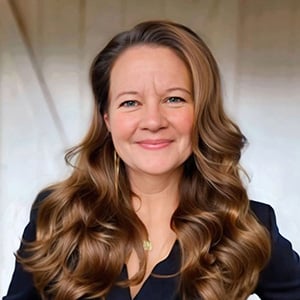Navigating Troubled Waters
Clean Cape Fear's water fight
JESSICA CANNON and EMILY DONOVAN remember the point at which they were spurred to action on local water quality issues: It was June 2017, when the StarNews published news about the presence of GenX in the Cape Fear River and, thus, in the region’s water supply.
“Jessica had started Suit Up Wilmington, an organization online that was working to promote transparency in government,” Donovan recalls. “It was a citizens group of mostly women. Jessica encouraged civic engagement – becoming part of the solution. Living in Brunswick County, I was doing that in my community, getting more civically engaged.
“When the StarNews broke the story on GenX,” Donovan continues, “that’s when we really saw the need to create a space for social justice issues with regard to water, bringing in other community groups to take on this bad actor.”
When Donovan says “bad actor,” she means Chemours, which had spun off from DuPont and which operated a chemical plant in Fayetteville, upriver from Brunswick and New Hanover counties. The discovery of GenX, and subsequently of other toxic per- and polyfluoroalkyl substances (PFAS) in the Cape Fear followed soon after the revelations of DuPont’s longtime chemical emissions cover-up in Parkersville, West Virginia. That story is chronicled in the current movie, Dark Waters, that was released in November.
Speaking of the news coming from examination of local river water, Donovan says, “We knew this was a tricky topic. The community was desperate for information.”
The women decided they needed to create an opportunity for education and the exchange of information about PFAS exposure locally. So, they founded Clean Cape Fear, which operates a website (cleancapefear.org) through the efforts of Cannon, Donovan, and two scientist volunteers.
The two founders describe their organization as “an alliance of established advocacy groups, community leaders, educators, and professionals working together to restore and protect our water quality, as well as spotlight deficiencies in governmental regulations that adversely impact our right to clean water.”
They also emphasize their commitment to challenging Chemours and Dow-DuPont (the latter now carved into separate companies) and holding the area’s elected officials accountable.
Cannon, a retired OB/GYN and mother of three boys, once worked as a legislative aide in the U.S. Capitol. She founded Suit Up Wilmington as an outgrowth of her advocacy for transparency at all levels of government.
Donovan, youth director at Little Chapel on the Boardwalk, heard a call to ministry and to civic activism several years ago when her husband survived a life-threatening brain tumor. She also was alarmed at the health risks PFAS pose to her children.
Cannon says that Donovan brings a credible voice to Clean Cape Fear because of her faith and her willingness to work with people of all political stripes to tackle water quality issues.
Both women are determined to remain nonpartisan in their approach and work with lawmakers across the aisle. Donovan has testified twice before Congress on the danger of PFAS and was part of an online Washington Post Live discussion of Dark Waters and the West Virginia PFAS suit. The discussion also featured actor/producer Mark Ruffalo, who stars as crusading lawyer Rob Bilott in the film, and Bilott himself.
The group is working with the Fight Forever Chemicals campaign championed by Ruffalo “to elevate and educate residents about the continued concerns regarding PFAS contamination in her community,” according to Participant Media, which produced DarkWaters.
Cannon’s and Donovan’s awareness efforts helped convince U.S. Rep. David Rouzer (R-N.C.) to co-sponsor the “PFAS Action Act of 2019,” which would require the EPA to “designate all perfluoroalkyl and polyfluoroalkyl substances as hazardous substances within one year of enactment of this bill.” While the bill has not yet been voted on in the U.S. House, Cannon and Donovan stress the importance of Rouzer’s support and continue to advocate for the bill’s consideration. Last July, they took a group of local cancer victims to the Capitol to tell their stories.
“Over the last couple of years we have gained a reputation of being a reliable source (of information on PFAS),” Donovan says, adding that she has researched the science extensively and has debunked the myth that chemicals developed to replace the known toxins are any safer.
“It’s a chemical whack-a-mole,” Cannon says. “It’s not one-and-done with Chemours. This is an international problem, but Europe is ahead of us with plans to ban these chemicals. (European countries) are calculating the health costs of exposure to the population.”
PFAS are everywhere in American consumer products (see below ) and even a small exposure through ingestion can be harmful to humans, given the chemicals’ long half-lives in our bodies, the women say.
“Our goal is to ban production of PFAS chemicals,” Cannon says. “For the most part, they are ‘luxury’ chemicals: not necessary for products they are in. We want people to be healthy and have companies not use our river as a sewer.”
Because exposure to PFAS chemicals is so widespread and dangerous, the women say, they are linking up with other groups to pursue their goal.
“There is a national coalition of PFAS-connected communities,” Donovan says. “We joined this, and it has helped us. We are trying to get PFAS-contaminated areas added to (qualification for) the Superfund.”
What are PFAs?
The U.S. Environmental Protection Agency defines PFAS as “a group of man-made chemicals that includes PFOA, PFOS, GenX, and many other chemicals. PFAS have been manufactured and used in a variety of industries around the globe since the 1940s.”
The EPA states that PFOA and PFOS have been the most extensively produced and studied of these chemicals, and both “are very persistent in the environment and in the human body – meaning they don’t break down and they can accumulate over time. There is evidence that exposure to PFAS can lead to adverse human health effects.”
The website lists sources of possible exposure to PFAS, including:
- Foods packaged in places where PFAS are found, or food grown in PFAS-contaminated soil or water
- Commercial household products, including stain and water-repellent fabrics, nonstick products such as Teflon, cleaning products, and firefighting foams
- Drinking water, especially water associated with a specific source of PFAS
- Living organisms such as fish, animals, and humans, given PFAS’ long-term retention and slow breakdown in bodies




